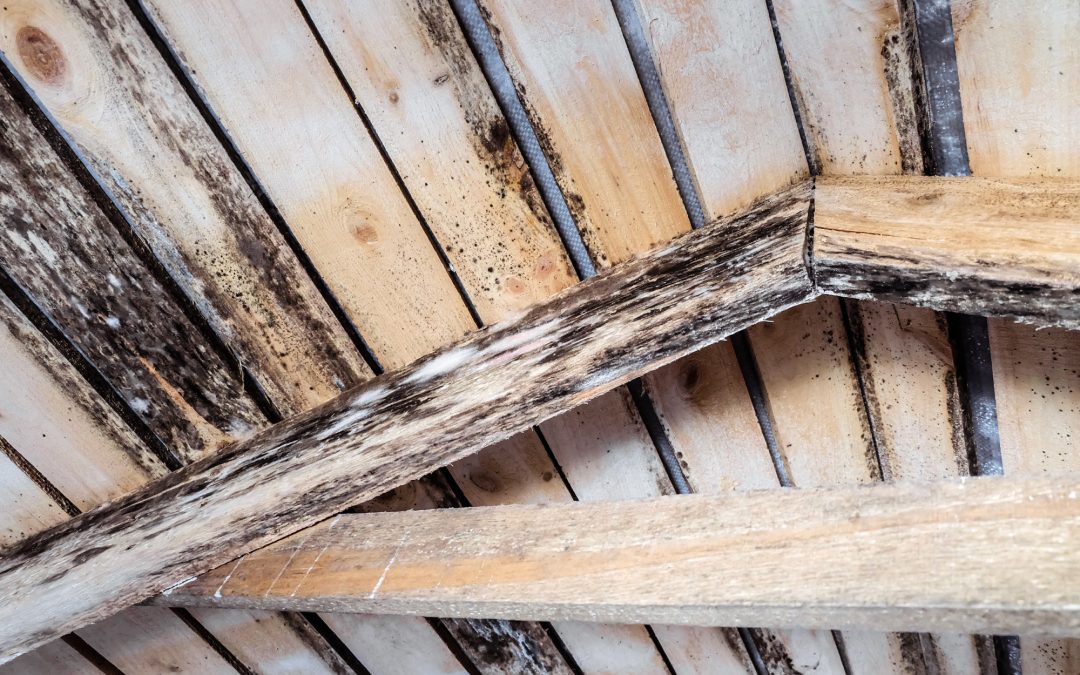The word “mold” is every homeowner’s worst nightmare. This hidden danger can spread unseen through the walls of your home, crippling your family’s health and wreaking havoc with your breathing and sleep.
But if this sounds familiar, you’re not alone: experts estimate that about 70 percent of US homes have mold lurking within, though not all species are toxic.
If you’re not sure whether you have hay fever or a mold problem, it may be time to do your own thorough inspection. Here’s what you should know about black mold symptoms and how to get help when you need it.
Black Mold Symptoms to Watch For
Before we go any further, it’s important to mention that the CDC states that the color of mold isn’t an indication of the danger level. In other words, it’s a good idea to have mold of any kind removed from your home, whether or not it’s the dreaded “black mold” that thrives indoors.
There are a few telling symptoms of mold to watch for, and most of them involve the respiratory system. Signs like coughing, congestion, wheezing, and a sore throat can all be signs of mold.
In addition, you might notice other subtle signs of bodily irritation, like a skin rash or itchy eyes.
These symptoms can be worse for those with chronic respiratory diseases like asthma, as well as the very old or young. Mold can also present hidden dangers for people with weakened immune systems, as these people can have a higher risk for problems like lung infection.
Identifying Black Mold in the Home
If you’ve noticed that you or a family member suffers from any of the symptoms above, especially on a recurring basis, you may have mold in your home. You can do a cursory check to look for mold yourself.
Look for dark green or black spots in warmer rooms. These spots are often paired with musty smells, and they may crop up in areas with high moisture, especially areas with leaks, poor ventilation, or water damage.
If you’ve received a home inspection before, you’ll know the mold is one of the common issues a home inspector can check for. If you’re in the process of buying or selling a home, you may be in luck: a home inspector will be able to test for mold as part of their overall home inspection process. However, if you plan to hang onto your property for a while longer, you may want to contact a professional mold inspector to test for and take care of the issue.
Both of the options above can be more of an expense than you were budgeting for, of course, and you may find yourself wanting to turn to home mold test kits as a quick alternative. These kits can run you anywhere from $20 to $50, and they’re easy to find online, making them a cheap option for a simple test. However, they have a reputation for presenting inconclusive or unreliable test results, so be aware that you may need more thorough follow-up testing.
How to Diagnose and Recover From Mold-Related Issues
Whether you suspect or know that mold is present in your home, it’s important to discuss your symptoms with a doctor, who can rule out other similar health conditions. For severe issues, a blood test or a skin prick test can help you learn whether you’re allergic to mold.
Whether or not you seek an allergy test, your doctor can help you navigate your recovery. In most cases, treatment for mold exposure is simple.
Over-the-counter nasal sprays like fluticasone can help lessen inflammation, and a simple saline solution can even help you rinse mold spores from your nasal passages. Antihistamines can also reduce inflammation, allowing you to breathe more easily, and decongestants may help as well. For severe allergies, your doctor may recommend allergy shots to build up your immunity.
Unfortunately, even the best recovery tactics can’t help you if mold is a constant presence in your home. To aid in your recovery, you’ll need to remove the mold.
What to Do When Your Home Has Mold
If you or a professional has identified mold within your home, you may be tempted to spiral into a panic.
Instead, take a deep breath—out of the mold-infested space—and consider the size of your problem. If you have only a small patch of mold, smaller than 10 square feet, you may be able to tackle the job yourself.
You’ll need to follow basic safety tips, like grabbing gloves and a respirator mask, before you get started. Depending on the type of surface in question, you may want to change up your strategy. In general, however, you’ll mix one part bleach to 15 parts water to scrub the area clean.
If you have a significant amount of mold, you may need to hire a pro to remove it. These experts can make sure your home is mold-free without releasing more toxic spores into the air, and they’ll have the equipment and expertise to tackle an issue that could cause you further health problems if you tried yourself.
Stay Vigilant to Prevent Mold
Unfortunately, mold affects a great deal of US households, and it’s quick to spread. The most important thing any homeowner can do is stay vigilant, watching for the black mold symptoms above, and taking care of any leaks or water damage that might allow mold to grow. Whether you’re selling or buying a home or simply trying to care for your property, these tips can help you keep unwanted mold away!
If you’re ready to make sure your home is in top shape, partner with us for all your needs. Schedule a home inspection today for peace of mind.

